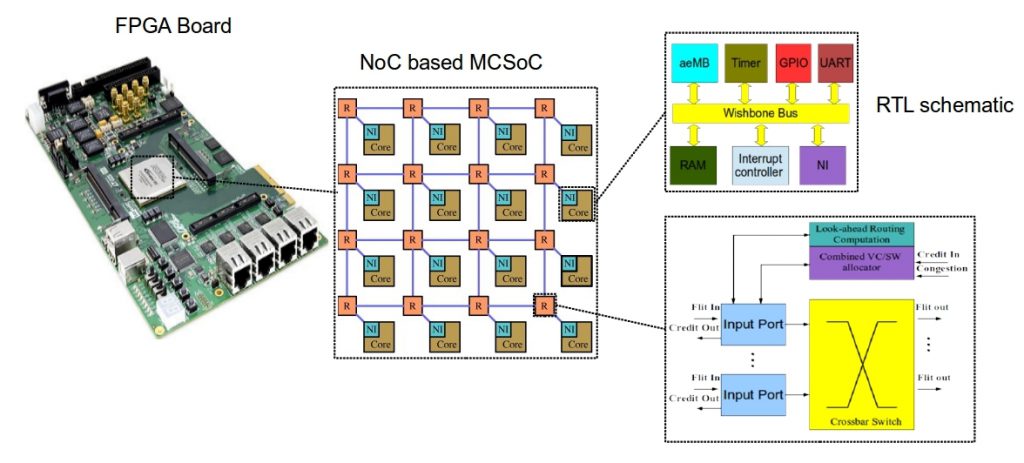نقشه برداری انرژی
چکیده
یک تحقیق گسترده در مورد برنامه ریزی کار و نقشه برداری روی سیستم چند پردازنده روی تراشه انجام شده است.
استراتژی در شبکه روی تراشه (NoC) تأثیر بسیار زیادی بر مخابره انرژی و کارایی دارد.
در این مقاله یک روش نقشه برداری هسته ای کارآمد برای معماری های مبتنی بر NoC پیشنهاد شده است.
که بر موضوعات نقشه برداری انرژی-آگاه و اعتبار- آگاه برای معماریهای مبتنی بر NoC تمرکز دارد و کاربردهای جدید با ارتباطات بین پردازنده ناچیز را به سیستم اضافه می کند.
این روش با به کاربردن در برنامه های معیار مختلف ارزیابی شد.
نتایج شبیه سازی آشکار می سازد که الگوریتم نقشه برداری پیشنهادی، قابلیت اطمینان سیستم را بهبود بخشیده و انرژی ارتباطی را کاهش می دهد.

نتیجه
برای طراحی با کیفیت MPSoC های آینده، نقشه برداری اتوماتیک هسته ها بر روی NoC ها بسیار مطلوب است.
الگوریتم پیشنهادی انرژی و قابلیت اطمینان آگاهی نقشه برداری (ERAM) با هر دو معیار مصنوعی و واقعی مورد آزمایش قرار گرفت.
نتایج به روشنی نشان می دهد که کاهش قابل توجهی در انرژی ارتباطی و بهبود اطمینان سیستم وجود دارد. سرانجام، نتایج نقشه برداری کارآمد، با استفاده از الگوریتم پیشنهادی به دست آمد.
برای مشاهده مطالب بیشتر به سایت www.farzdon.ir مراجعه نماید .
Abstract
Extensive research has been conducted on task scheduling and mapping on a multi-processor system on chip.
The mapping strategy on a network on chip (NoC) has a huge effect on the communication energy and performance.
This paper proposes an efficient core mapping for NoC-based architectures. Which focus on energy- aware and reliability-aware mapping issues for NoC-based architectures and considers new applications with insignificant inter-processor communication overhead to be added to the system.
This methodology was assessed by applying it to various benchmark applications.
Simulation results reveal that the proposed mapping algorithm greatly improves the reliability of the system and reduce the communication energy.

Conclusion
For the efficient design of future MPSoCs, an automatic mapping of cores onto NoCs is highly desirable.
The proposed Energy and Reliability Aware Mapping (ERAM) algorithm was tested with both synthetic and real benchmarks.
The results evidently implicate that there is a considerable reduction in communication energy and improvement in system reliability.
Finally, efficient mapping results were obtained by using the proposed algorithm

